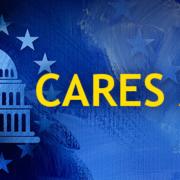Do you have tax questions related to COVID-19? Here are some answers
The coronavirus (COVID-19) pandemic has affected many Americans’ finances. Here are some answers to questions you may have right now.
My employer closed the office and I’m working from home. Can I deduct any of the related expenses?
Unfortunately, no. If you’re an employee who telecommutes, there are strict rules that govern whether you can deduct home office expenses. For 2018–2025 employee home office expenses aren’t deductible. (Starting in 2026, an employee may deduct home office expenses, within limits, if the office is for the convenience of his or her employer and certain requirements are met.)
Be aware that these are the rules for employees. Business owners who work from home may qualify for home office deductions.
My son was laid off from his job and is receiving unemployment benefits. Are they taxable?
Yes. Unemployment compensation is taxable for federal tax purposes. This includes your son’s state unemployment benefits plus the temporary $600 per week from the federal government. (Depending on the state he lives in, his benefits may be taxed for state tax purposes as well.)
Your son can have tax withheld from unemployment benefits or make estimated tax payments to the IRS.
The value of my stock portfolio is currently down. If I sell a losing stock now, can I deduct the loss on my 2020 tax return?
It depends. Let’s say you sell a losing stock this year but earlier this year, you sold stock shares at a gain. You have both a capital loss and a capital gain. Your capital gains and losses for the year must be netted against one another in a specific order, based on whether they’re short-term (held one year or less) or long-term (held for more than one year).
If, after the netting, you have short-term or long-term losses (or both), you can use them to offset up to $3,000 ordinary income ($1,500 for married taxpayers filing separately). Any loss in excess of this limit is carried forward to later years, until all of it is either offset against capital gains or deducted against ordinary income in those years, subject to the $3,000 limit.
I know the tax filing deadline has been extended until July 15 this year. Does that mean I have more time to contribute to my IRA?
Yes. You have until July 15 to contribute to an IRA for 2019. If you’re eligible, you can contribute up to $6,000 to an IRA, plus an extra $1,000 “catch-up” amount if you were age 50 or older on December 31, 2019.
What about making estimated payments for 2020?
The 2020 estimated tax payment deadlines for the first quarter (due April 15) and the second quarter (due June 15) have been extended until July 15, 2020.
Need help?
These are only some of the tax-related questions you may have related to COVID-19. Contact us if you have other questions or need more information about the topics discussed above.
© 2020













